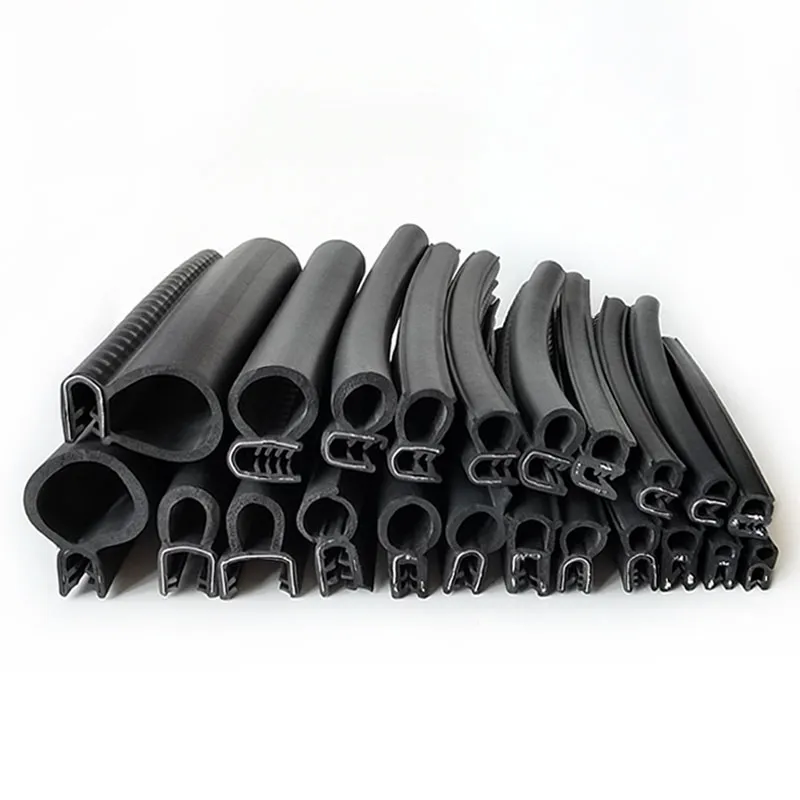Advancements in Container Sealing Strips Enhance Food Safety and Preservation
Advancements in Container Sealing Strips Enhance Food Safety and Preservation
In recent years, the development and refinement of container sealing strip technology have marked significant strides in ensuring the safety and longevity of food products. These innovations aim to address persistent issues within the food storage industry, such as leakage, contamination, and degradation. Traditionally, the food storage industry has relied on various forms of containers and sealing methods, but many of these older solutions have not been entirely effective in preventing the myriad issues that compromise food safety. Improving sealing efficiency, manufacturers are now focused on developing new materials that offer enhanced capabilities. Silicone and thermoplastic elastomers (TPE) have emerged as the frontrunners due to their flexibility, durability, and resistance to extreme temperature variations. These materials ensure that sealing strips remain effective in maintaining the integrity of the containers, even when subjected to the most rigorous conditions, thereby significantly reducing the risks of spoilage and contamination.
The primary advantage of these advanced sealing strips lies in their profound impact on food safety. Traditional container seals often fall short in creating a reliable barrier against environmental contaminants, making stored food susceptible to bacteria and other harmful microorganisms. The latest generation of sealing strips, by forming an airtight seal, provides a robust defense line that significantly reduces the entry of spoilage agents. Furthermore, these enhanced seals are not just beneficial for everyday household use; they hold tremendous potential for industrial applications as well. In sectors such as pharmaceuticals and chemicals, where the transportation and storage of sensitive materials necessitate stringent safety measures, improved sealing technology is critical. During logistics operations, these advanced strips maintain the safety and integrity of products, ensuring that they arrive at their destination without compromising quality. This dual utility in both domestic and industrial applications underscores the versatility and importance of these technological advancements.
User experience and environmental sustainability are also at the forefront of these innovations. Modern sealing strips are increasingly designed with ease of use in mind, facilitating effortless installation and removal. Innovations like self-aligning strip technology have been introduced to guarantee a perfect seal every time, thus minimizing the potential for user error. This ease of use is crucial in household settings where consumers seek convenience and reliability in their daily food storage practices. Additionally, manufacturers are responding to the growing demand for eco-friendly products by developing biodegradable and recyclable sealing strips. These environmentally-conscious options are beneficial not only for the end-user but also align with global sustainability goals by reducing the environmental footprint. As consumer awareness and concern for the environment continue to grow, the move towards sustainable materials in sealing technology is both timely and necessary. Altogether, the advancements in container sealing strip technology represent a convergence of innovation, utility, and environmental responsibility, promising a future where food safety, user convenience, and sustainability are harmoniously balanced.
Aktie
-
Lithium Battery Welding Machine | High-Precision, Fast, SafeNachrichtNov.17,2025
-
Aluminium Guide Roller | Anodized, Lightweight, Low-NoiseNachrichtNov.17,2025
-
Tofu Cat Litter Bulk – Eco, Low-Dust, Fast Clumping SupplyNachrichtNov.17,2025
-
Equipment for Lithium Cell Assembly | Automated & PreciseNachrichtNov.10,2025
-
Square File Tool – Precision Cut, Hardened Steel, VersatileNachrichtNov.10,2025
-
Lithium Ion Battery Assembly Machine | Automated, High-SpeedNachrichtNov.10,2025








